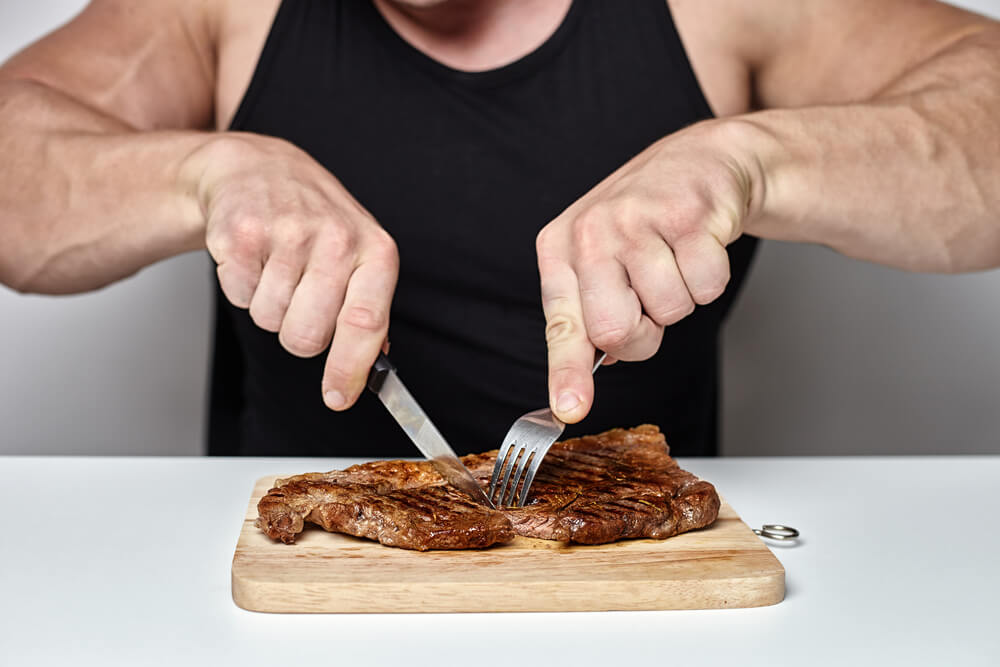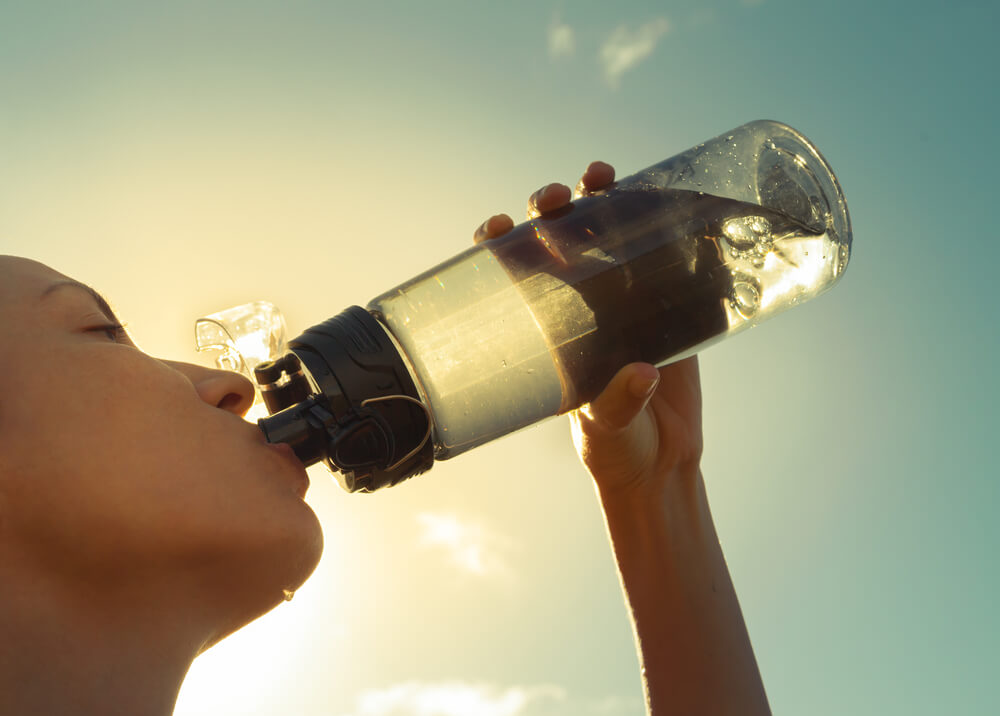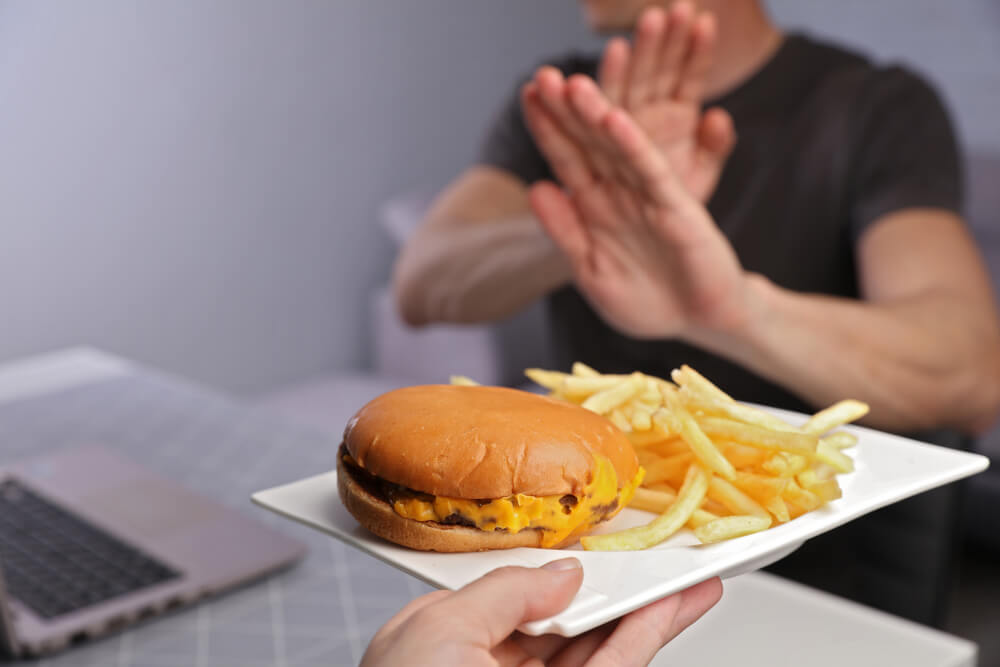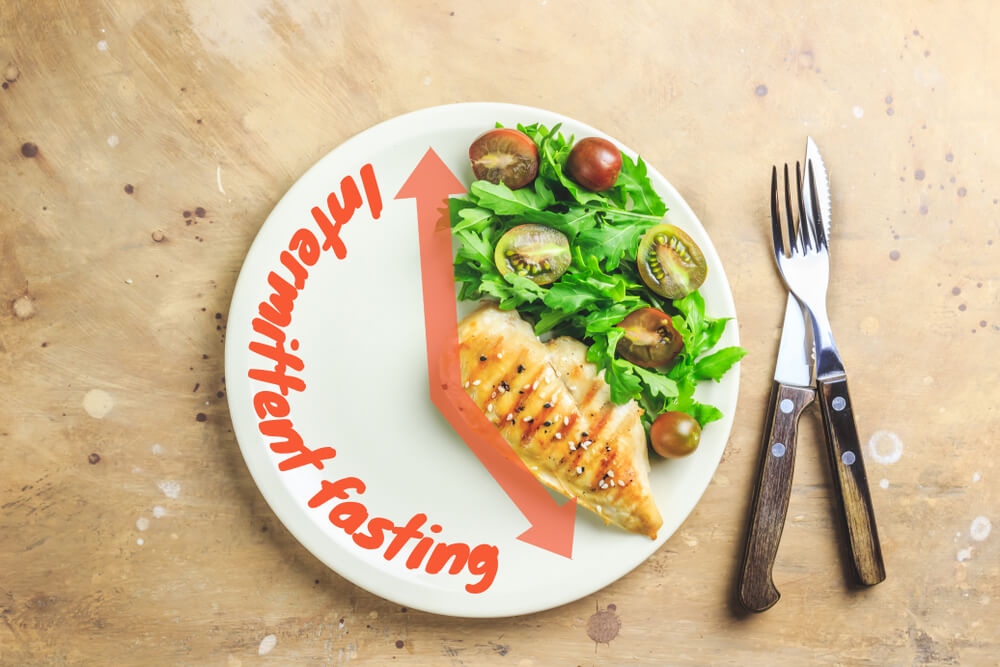
Losing weight simply, naturally, and safely isn’t difficult, but many beginning their journey don’t know where to start. Between weight loss workouts, weekly diets, and daily routine change-ups, it’s easy to feel overwhelmed.
A variety of research-based methods capable of helping us on our journey exist, however—which means learning how to decrease weight around your waistline has never been easier. Your journey needn’t be a grandiose, daunting undertaking, and you can maintain your new routine while keeping the pounds at bay.
So hop aboard the weight-loss train, because your new, lighter self is just around the corner. Check out these top weight loss tips—straight from the professionals.
Tip One: Eat More Protein

Surprisingly, eating more can make you weightless. This is, of course, if you’re eating more of the right foods.
High-protein diets are great for losing weight. In fact, current research on the consumption of high-protein meals concludes that it’s one of the best strategies for preventing obesity—and treating it. This research follows a standardized consumption of 30 grams of protein per day, too, which isn’t too tough to maintain.
Where the foods themselves are considered, the following are great day-to-day staples for grounding a great diet:
- Egg whites
- Fish
- White poultry
- Tofu
- Beans, lentils, and peas
These proteins are lean, so don’t worry about gaining extra pounds from carbs and grease. If you’re in a bind for quick protein, you can ward off your food cravings with a protein smoothie. As the most satisfying macronutrient around, protein makes you feel fuller longer. A solid, go-to protein shake is a delectable mash-up of the following ingredients:
- Yogurt
- Spinach
- Berries
- Milk
Protein powder is another great option—but be sure to research your options before purchasing a canister: Some protein powders might contain extra sugars, sweeteners, and carbs—which can slow down your weight loss progress.
Check out these other great protein shake options—as each is geared towards weight loss without sacrificing taste.
Tip Two: Drink Plenty of Water

Another great fat loss ingredient is water. Consuming water keeps hunger pains at bay—which can help you consume fewer calories in general. In a U.S. National Library of Medicine National Institutes of Health study, 50 overweight females consumed as little as 500 milliliters of water 30 minutes before every meal.
After following this regimen for eight weeks, each experienced a considerable loss in body fat, body weight, and body mass index. In each case, the results reportedly stemmed from the following:
Increased appetite suppression.
If you want to learn a little more about how to decrease weight with water, check out this beverage’s other weight loss benefits:
Water Boosts Caloric Burning
In another study, participants consuming 500 ml over their current water intake also experienced heightened rates of thermogenesis. Thermogenesis, itself, is the resting state at which our bodies expend calories. The study recorded an astounding increase of up to three percent in some—demonstrating a much higher rate of caloric loss.
Water tends to temporarily increase the body’s resting caloric expenditure rates—especially if the water is cold. This is because the body needs to raise the water’s temperature for digestion, spending extra energy during the process.
Water Boosts Your Workout Results
We hear it all the time: If you’re exercising, be sure to drink plenty of water.
To dive into the how and why of this golden rule, we should look at the components of exercise itself: During a workout, our muscles undergo a considerable amount of stress. Being hydrated reduces fatigue, and it also reduces the chance of muscle cramps—and both benefits let us exercise harder, longer, and more consistently.
Water also helps our connective tissues, muscles, and joints move the way they’re supposed to move—and it helps our heart, lungs, and organs handle the stresses of consistent exercise.
Keeping your water thermos close at hand is important for keeping your body in a ready-to-move state, and it’ll make sure your body is also primed for quick recovery, which means more time in the gym overall. If you’re still learning how to decrease weight with a daily schedule, drinking extra water is a great way to start.
Water Removes Body Waste Quicker
If your body is dehydrated, it can’t clean itself in the way it’s supposed to. Your kidneys need water to filter waste and other toxins while retaining proper electrolyte balances. If your body lacks sufficient water, they’ll retain fluid. This might seem like a good thing, at first, but it can actually result in imbalanced electrolytes—as your body will lack enough electrolytes to match the increased retention.
If your body lacks proper hydration, waste tends to build up quicker. When this happens, we tend to feel swollen, bloated, and tired.
Talk about extra inches around the waist, right?
These pounds can be surprisingly tough to shed, too, resulting in some stubborn pounds which just won’t go away.
Tip Three: Cut Out Refined Carbs

Carbs, themselves, aren’t unhealthy: They’re vital for energy, digestion, and a well-balanced diet. Refined carbs, however, can be damaging to the body’s metabolism. The American Journal of Clinical Nutrition even suggests that these types of carbohydrates can hinder us more than saturated fats.
But what are refined carbs, anyway?
More or less, refined carbohydrates are processed carbohydrates. Often called ‘simple carbs,’ these carbs are found in processed sugars and high fructose corn syrup. Most of their fiber, minerals, and vitamins have been removed—making them, more or less, ‘empty’ calories. They’re digested quickly—but they also cause blood sugar spikes once they’ve been consumed, which can really throw off our metabolism’s equilibrium.
The Blood Sugar Problem: Diving Deeper
Because these carbohydrates are digested so quickly, they only result in short-term fullness—which lasts about an hour. During this hour, our blood sugar levels drop—only to quickly rise at the end of this period. When our metabolisms are thrown out of whack, like this, we tend to overeat more.
We also tend to crave more refined carbs, too, as their quick energy spikes can become addictive for our bodies.
Long-term studies also link refined carb consumption with more belly fat, too. This is caused by the above-mentioned blood sugar fluctuations and long-term cravings combined, but it’s also the result of body inflammation. Some experts speculate that this inflammation is caused by leptin resistance, over time, as a direct result of rapid blood sugar fluctuations.
Foods to Avoid

Learning how to decrease weight by cutting our refined carbs takes time, as simple carbs can lurk in surprising places. Still, they’re easily spotted in some common daily dishes. To avoid refined carbs, keep an eye out for these common troublemakers:
- White bread
- White flour
- Pastries
- Soda
- Breakfast Cereals
- White Rice
Tip Four: Try Intermittent Fasting

Plenty of experts propose intermittent fasting as a great practice to adopt for those looking to lose extra weight.
It’s a dieting strategy involving an eating cycle grounded in routine breaks—or ‘fasting periods.’ Unlike conventional diet routines, intermittent fasting has far fewer restrictions in terms of what foods are consumed. Common intermittent fasting methods typically involve daily, 16-hour fasting periods—wherein only water is consumed.
This might seem difficult, but eight of these 16 hours take place during slumbering hours.
So, for example, an intermittent fasting period which takes place at 8 p.m. requires one to only abstain from eating until noontime the next day.
Fasting has been practiced throughout human evolution, and it’s been shown to increase one’s lifespan while improving overall tolerance to metabolic stress.
The most commonly practiced forms of intermittent fasting utilize an alternating schedule—wherein every other day is a ‘fasting day,’ and the days between following a regular dieting routine.
Those who become dedicated to intermittent fasting eventually pursue longer fasting periods: It isn’t rare to see committed fasters undergo 18-hour fasting periods, or even full, 24-hour periods. These 24-hour periods, also called ‘full-day fasts,’ only occur once per week—but they’re incredibly effective weight loss techniques.
Aside from the fat loss, intermittent fasting is also proposed to create immune responses which repair cells, creates positive metabolic processes, lowers blood pressure, and reduces LDL cholesterol.
In one study, experts found that intermittent fasting resulted in an average loss of approximately seven to 11 pounds within a 10-week period. Even better: Those studied didn’t display signs of ‘rebound hunger’ during non-fasting periods, either: Abstaining from eating, if done properly, doesn’t result in binge-eating during rest periods.
Tip Five: Lift Weights

Any type of exercise can slim the waistline, but weightlifting has been proven to be extra effective. Lifting weights burns plenty of calories, and it keeps your metabolism running at peak strength throughout the day. Studies also show that it’s possible to gain muscle mass while on a low-carb diet, too, which means you can continue getting stronger without packing on extra snacks.
Make no mistake, however: Gaining muscle doesn’t necessarily mean you’ll gain extra pounds.
In fact, a higher degree of muscle density actually results in a higher resting metabolic rate. So it’s possible to trim down as opposed to bulk up while hitting the weights.
We recommend going to the gym at least four times per week to lose the most weight. If lifting weights isn’t a viable option, totally get involved with cardio workouts—like jogging, running, swimming, or cycling. If possible, try combining these cardio exercises with resistance training—because the powerful duo will trim more pounds overall.
Take It Slow—and Have Fun!
Weight loss doesn’t need to be boring—and it doesn’t need to be stressful, either. If you’re still learning how to decrease weight around your waistline, it’s a good idea to ask a professional fitness trainer for help. These expert exercise gurus can supercharge your gym routine, helping you pair an on-point diet with some truly stellar fitness routines.
Where diets themselves are considered: There are some tasty weight loss dishes that circumnavigate the carbohydrate conundrum without sacrificing taste. We definitely recommend intermittent fasting, too, if you’re a food-lover like us. Intermittent fasting is a much more flexible dieting routine when it comes to meals—as they have far fewer carbohydrate restrictions.
Conclusion
In any event, don’t worry about taking things too slowly. Learning how to decrease weight takes time—and Rome wasn’t built in a day. A good place to start is on your local grocery store’s nutrition aisle: Pick out a sugar-free protein shake with few calories, and drink it in place of a regular afternoon snack. The best thing about weight loss routines is just how quickly they evolve. Before you know it, you’ll be looking at a thinner, healthier you in the mirror.
-Terry Asher
Terry Asher
Latest posts by Terry Asher (see all)
- Better Family – Product Review Liquid Daily 2 oz - Dec 16, 2024
- Post-Workout Recovery: The Key to Optimal Performance - Nov 25, 2024
- Pre-Workout Supplements – Everything You Need To Know - Nov 18, 2024












[…] This article was originally published by Gymjunkies.com. Read the original article here. […]
[…] Source link […]
[…] Source link […]
[…] Read The Entire Article By Terry Asher Here. […]
it was useful
[…] matter who you are, no matter what you do, you need to stay hydrated. Typically you want to drink four quarts a day, plus about twelve to sixteen ounces before a […]
[…] matter who you are, no matter what you do, you need to stay hydrated. Typically you want to drink four quarts a day, plus about twelve to sixteen ounces before a […]
[…] matter who you are, no matter what you do, you need to stay hydrated. Typically you want to drink four quarts a day, plus about twelve to sixteen ounces before a […]